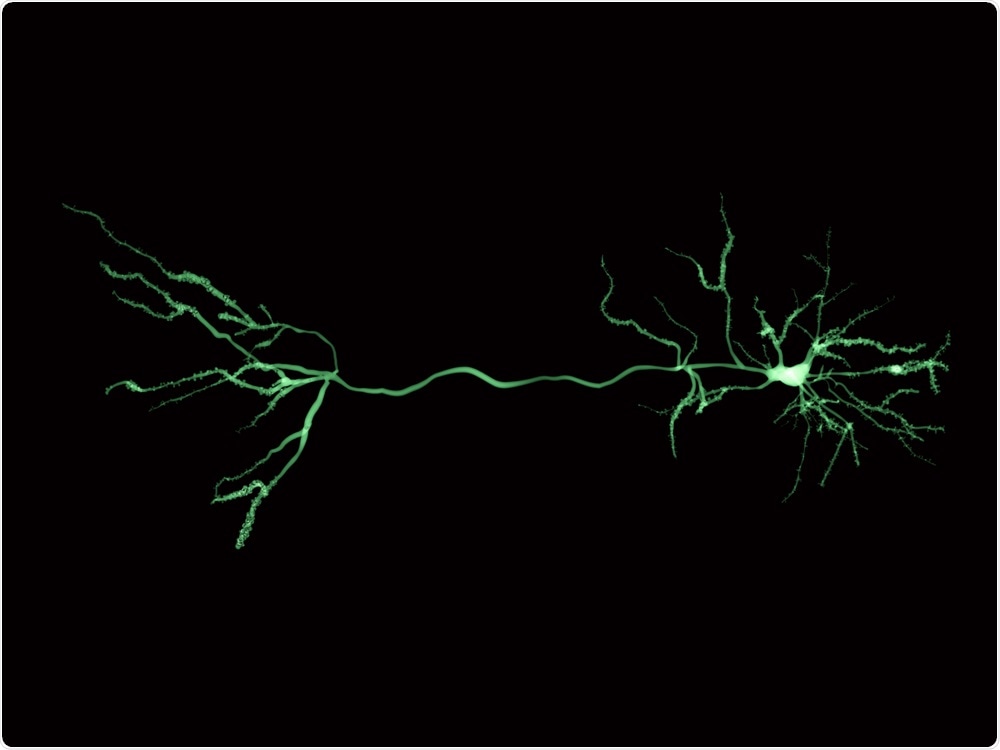News-Medical speaks to Sarah Locknar, Ph.D, about how optical filters are being used to improve microscopic analysis within the field of neuroscience.
Please tell us about Omega Optical.
Omega Optical is a thin-film interference manufacturer that has been in business since 1969. We make custom and standard optical filters for a variety of markets including life science, machine vision, LIDAR, defense and Astronomy/ Aerospace.

Image Credit: Juan Gaertner/Shutterstock.com
We were one of the first filter companies selling into the fluorescence microscopy and flow cytometry markets in the early 1980s and worked closely with researchers and companies as they developed new dyes and techniques.
We also have been involved in many high-profile astronomy projects over the years, from the Haley's comet flyby in the 1980s, to the Hubble Space Telescope and Mars Rovers.
How can optical filters improve microscopic analysis?
Optical filters have been used for fluorescence detection since the 1980s. Filters are used to separate the wavelengths (or colors) of the different dyes from one another.
The number of fluorescent labels (dyes) has increased rapidly over the years and researchers have developed methods to label over 20 different targets at once in a single sample.
This multiplexing has led to big advances in biology- researchers can really piece out which proteins interact and in what order, and they can also monitor many of these proteins (and other parameters such as ion flow, pH, etc) in real time using fluorescence imaging.

Image Credit: Andrii Vodolazhskyi/Shutterstock.com
Why do fiber tips need optical coatings?
There are several advantages to using coated fiber tips instead of flat filters. One is stability- once the light is inside a single-mode fiber, the throughput is quite stable, enabling the fiber to be vibrated or coiled and uncoiled without losing signal (useful in live-animal experiments).
The tip of this fiber can be coated with an antireflection coating to couple into free-space (or to help couple light into it in the first place) or with a cleanup filter that might remove the Raman signal generated by the fiber itself (for instance).
The coated tip can also be butt-coupled into a fiber array - we have developed a fast-spectral imaging system based on this concept, where pulsed excitation light generates time-indexed wavelength bands of fluorescence signal at a single PMT detector.
How are your optical filters used in other disciplines in your industry?
The Defense markets include filters in the NIR and MIR wavelengths for things like night-vision, ranging and targeting optics, as well as LIDAR applications.
Omega acquired some assets of the small company, Rugate Technolgies, several years ago which had expertise in the longer wavelength ranges. We have been steadily extending out into longer wavelengths with new materials and process developments.
One application that is making a comeback is free-space laser communications involving satellites. This requires relatively sharp, narrow filters to hone in on the laser wavelength carrying the information.
 Image Credit: OmegaOptical
Image Credit: OmegaOptical
How do you think the use of your products will advance future scientific research and development? Can you provide any examples?
Omega provides many custom solutions to the research community. We are always willing to discuss your project, new ideas and concepts for improving your experiments. We have seen the wavelengths used in fluorescence moving more towards the IR wavelengths and we are well poised to support researchers in this area.
What makes Omega Optical and its technologies unique?
Omega brings 50 years of experience to every project. We have an extensive inventory of component parts for small lots and prototyping and we have a large variety of tools in our toolbox. We have more materials and thin-film deposition methods at our disposal than any of our competitors and the knowledge to know what will work best for your particular application at the most reasonable price.
Will Omega Filters be attending any tradeshows this year?
At the beginning of February, Omega will be attending SPIE Bios (booth 8459) and Photonics West (booth 1832) in San Francisco. These are our biggest shows of the year as the attendees encompass all of our major markets. We would be happy to set up a meeting with you if you email us at [email protected], or just stop by!
Where can readers find more information?
Custom filters for research, clinical, and point-of-care colorimetric and fluorescence-based instruments
About Sarah Locknar
 Sarah Locknar joined Omega Optical in 2009 after working at Biotek Instruments (a microplate reader manufacturer) and the University of Vermont Department of Anatomy and Neurobiology as Director of the Imaging and Physiology core facility.
Sarah Locknar joined Omega Optical in 2009 after working at Biotek Instruments (a microplate reader manufacturer) and the University of Vermont Department of Anatomy and Neurobiology as Director of the Imaging and Physiology core facility.
She has a Ph.D. in Physical Chemistry (optical spectroscopy) and has been a product manager for fluorescence filters for the past 5 years. She came to Omega as a member of the R&D department working on a fiber-coupled spectral-scanning microendoscope and thin-film solar research.